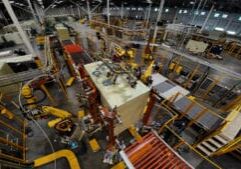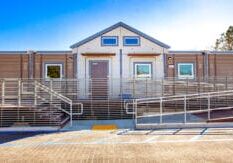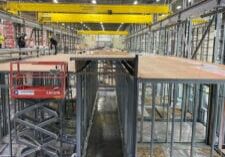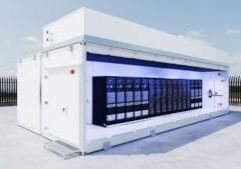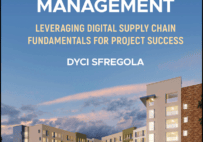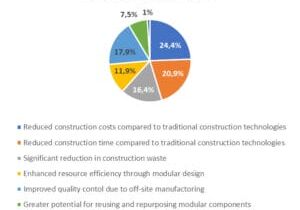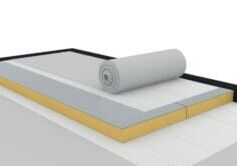Now for 2024
Looking Back & Forward

Anirban Basu is the Chairman & CEO of Sage Policy Group and Chief Economist of the Modular Building Institute.
Looking Back
Coming into 2023, economists could be considered an arrogant lot. Normally, forecasting economic activity is a humbling experience. But this year was set to be different. Recession was all but assured given the Federal Reserve’s aggressive anti-inflation campaign – one associated with the fastest interest rate increases in more than four decades. After a period of euphoric, inflation-soaked recovery from the early stages of the pandemic, the economy was due for a setback.
Economists were not alone. Surveys of U.S. executives conducted in late-2022 indicated that business leaders were also convinced that recession was on the way. Many firms indicated an intention to reduce full-time headcount in anticipation of 2023’s downturn, a way to preserve quarterly profits even as demand for goods and services began to dry up.
Alas, economists are even more humble now. Rather than entering recession, the economy has powered through both lingering excess inflation and higher interest rates. Equity markets have rallied.
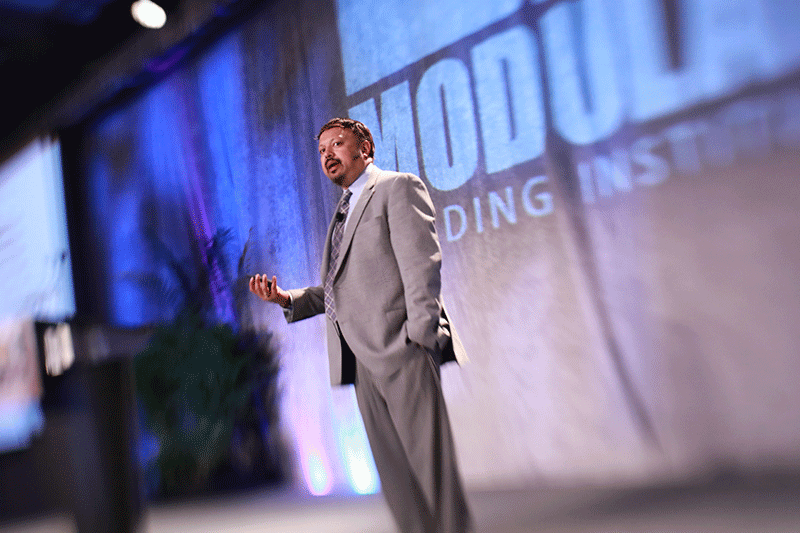
Anirban Basu speaks at MBI's annual World of Modular conference and tradeshow.
Employers have hired. The unemployment rate has remained neatly below 4 percent, and stands at below 3 percent in many major metropolitan areas. Even home prices, which were expected to give back much of their pandemic-era gains, have been climbing recently.
Indeed, rather than slow down, the economy has been gathering steam as the year has progressed. During the first quarter, U.S. gross domestic product expanded 2.0 percent. The next quarter ushered forth an equally satisfying 2.1 percent performance. For much of the third quarter, the economy has been on pace to expand at a faster than 3 percent rate. None of this are indicia of recession. Consumer spending continues to drive activity forward. So, too, does the current era of the megaproject, with construction firms benefitting from surging infrastructure and industrial construction as the federal government continues to pour monies into the economy and as supply chains return to America with fury.
The ability of the U.S. economy and its interest rate sensitive construction sector to power through a period of weak global growth, bank failures, and higher borrowing costs has been simply mystifying. Capitulating to ongoing momentum, many economists have simply dropped their recession forecasts, including economists from J.P. Morgan and Bank of America.
Serving as evidence that one can in fact have their cake and eat it too, the economy has continued to expand even as inflation has abated. In June 2022, inflation as measured by the Consumer Price Index stood at 9.1 percent. By August 2023, this figure stood meaningfully below 4 percent, though core measures of inflation, which exclude food and energy prices, suggested that inflation was a bit hotter than that. Nonetheless, the pace at which prices are rising has softened markedly. During a recent 12-month period, construction materials prices declined, including in categories like steel, lumber, and crude oil-based products.
The question is why. There are many who would simply give the Federal Reserve credit for the dip in inflation. After all, America’s central bankers have been raising interest rates since March 2022. At that time, the upper limit on the Federal Funds rate, the Federal Reserve’s principal policy instrument stood at 0.25 percent. That same rate ended September 2023 at 5.5 percent. Economists suggest that as interest rates rise, growth slows down and inflationary pressures abate.
It seems so simple. But it is not. There is another explanation for falling inflation – vastly improved supply chains. While many contractors and manufacturers will point out that equipment shortages remain and lead times remain elevated in certain categories, supply chains are meaningfully more dependable than they were in late-2021.
As supply chains normalize and approach complete operability, two things occur. First, pent-up demand is belatedly satisfied, in whole or in part. That results in a profound level of transactional volume. That transactional volume translates into economic growth. Second, as unmet demand is satiated, scarcity abates. That results in less significant price increases and in certain instances outright price declines.
Accordingly, one could theorize that the Federal Reserve’s rate increases have to date had precious little impact on the macroeconomy. Sure, there has been the failure of banks like Silicon Valley Bank (March 10th) and Signature Bank (March 12th) that can be laid at the Federal Reserve’s doorstep, but consider the fact that this has been a period of rising home prices, robust hiring, and equity market gains. That suggests that rate increases to date have not substantially bent the economy’s growth trajectory.
But that can change. As indicated by the highly regarded President and CEO of the Atlanta Federal Reserve Bank, Raphael Bostic, tighter monetary policy can take between 18 months to two years or longer to materially impact inflation. If that is true, then much of the impact associated with higher interest rates has yet to be experienced, and that jeopardizes economic progress.
There are others, however, that would suggest that all of that is hogwash. The economy has enough momentum to power through current and forward-looking high interest rates. As of this writing, the U.S. economy has added approximately 236,000 jobs/month in 2023. Through July, there were 8.8 million available unfilled jobs in America, with nearly 400,000 of them associated with construction and more than half a million associated with the nation’s manufacturing sector. In short, demand for workers remains high. As long as it does, the economy will continue to add jobs and spending power. Many reason that that will suffice to keep inflationary forces at bay.
Looking Ahead
There remain both reasons for hope and reasons for concern. One’s forecast depends upon that which people place emphasis. There is certainly plenty for the glass half-full crowd. At the heart of their optimism is the American consumer, who has manifested an ongoing appetite to travel, shop, and spend thousands on Taylor Swift concert tickets. That consumer is supported by a strong employment market, one that added jobs every month between January 2021 and September 2023 and stands to add more jobs going forward as employers endeavor to fill available positions.
Perhaps nothing encapsulates the strength of the labor market as well as a recently completed deal between UPS and its union. UPS indicates that at by the end of the new five-year contract, the average UPS full-time driver will earn approximately $170,000 annually in pay and benefits.
If that were not enough, America is poised for a wellspring of infrastructure outlays and large-scale manufacturing projects. Industrial policymaking has returned to America, with the federal government subsidizing supply chain formation aggressively using tax credits, including in segments like semiconductor manufacturing, battery production, and inputs to alternative energy like solar panels and wind turbines.
But the glass half-empty crowd has plenty of ammunition, too. While consumers have been spending and employers hiring, a spate of labor unrest threatens future production, including a UAW strike transpiring during the period of this writing. The resumption of student debt repayment also stands to hammer many household balance sheets. Consumers have already amassed more than $1 trillion in outstanding credit card debt, and delinquencies are on the rise.
What is more, the Federal Reserve recently indicated that their rate hiking may not have ended as inflation remains above its 2 percent target. Several significant banks suffered debt downgrades recently from the likes of S&P Global and Moody’s. The upshot is that bank credit is likely to tighten further, rendering project financing more challenging. That could help whittle away at presently lofty backlogs and ultimately push the broader economy into recession at some point over the next year.
More from Modular Advantage
Resia: Breaking All the Rules
Resia Manufacturing, a division of U.S.-based Resia, is now offering prefabricated bathroom and kitchen components to industry partners. Its hybrid fabrication facility produces more precise bathroom and kitchen components (modules) faster and at lower cost than traditional construction. Here’s how Resia Manufacturing does it.
How LINQ Modular Innovates to Bring Modular To The Market in the UAE and Beyond
LINQ Modular, with an office and three manufacturing facilities in Dubai, is a modular firm based in United Arab Emirates. The company is on a mission: to break open the housing and construction markets in the Gulf Cooperation Council (GCC) area with modular.
ModMax: Redefining Modular Construction with Confidence and Precision
ModMax was born out of frustration—frustration with five persistent pain points in modular construction: Permitting bottlenecks. Production delays. Rigid designs. Disconnect between “the office” and the field. Lack of transparency and communication.
LifeArk: Disaster-Resilient Housing from Recycled Plastic and 100-year-old Technology
Wee compares LifeArk’s housing units to Yeti coolers, as they are built similarly. Each component takes 15 to 20 minutes to manufacture, has an R-value of 40, and includes molded slots and chases for wiring, plumbing, fire sprinklers, and other utilities.
Building the Future of Modular Edge Infrastructure
The edge data center market is expanding rapidly, driven by the surge in AI workloads, IoT adoption, and the need for localized compute power. In these environments, sustainability, scalability, and reliability are non-negotiable. Cooling is among the most complex challenges for operators—and one of the most decisive factors in long-term success.
Accelerating Light-Gauge Steel Construction: A Semi-Automated Digital Workflow for Off-Site Projects
For construction professionals, the message is clear. By adopting semi-automation and digitalization, companies can deliver projects faster, more accurately, and more profitably, while also building stronger collaboration across teams. The approach is not about replacing people with machines, but about empowering people with better tools and processes.
Why Modular Data Centers Are Gaining Momentum
Artificial intelligence, high-performance computing, and edge applications push the limits of traditional “stick-built” data centers. They take years build, often struggle with high density workloads, and aren’t optimized for deployments near end users. Modular data center platforms are purpose-built to address these challenges, offering flexibility and scalability to adapt to evolving technologies, while opening new opportunities for the modular construction industry.
Supply Chain Innovation in Action: 5 Habits Every Modular Leader Should Practice
By applying these principles to supply chain practices — collaborative planning, strategic procurement, scenario modeling, digital tools, and transparent forecasting — construction leaders can build value chains that are not just efficient and agile, but truly innovative.
Exploring the Role of Modular Integrated Construction (MiC) in Advancing Circular City Principles – A Survey of Stakeholder Perspectives
The survey findings highlight the significant potential of Modular integrated Construction (MiC) in advancing the development of circular cities. By reducing costs, accelerating construction timelines, and minimizing waste generation, MiC offers a promising approach to sustainable urban development.
The Use of MS POLYMER™-Based Sealants and Adhesives in Modular Building
These products combine flexibility and elastic recovery with excellent adhesion to different substrates and have already shown their usefulness in traditional construction. Now it’s time for them to be put to use in the modular construction industry.

